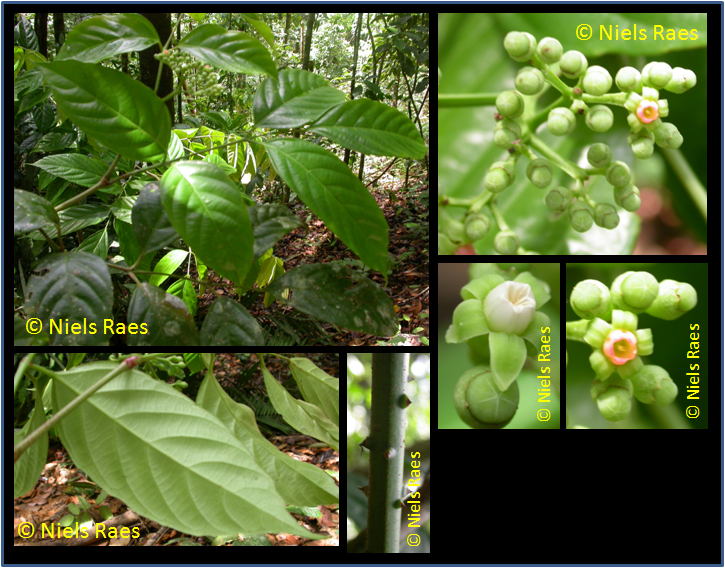Leea aculeata Blume ex Spreng., Syst. Veg. 1 (1824)
Latin for 'spiny'.Synonyms
Frutex aquosus mas Rumph.
Leea aculeata (Blanco) Blanco
Leea aculeata var. moluccana Miq.
Leea sandakanensis Ridl.
Leea serrulata Miq.
Ticorea aculeata Blanco
Description
Shrub or small tree reaching a height of 11 meters and 18 cm dbh. Stems are spiny. Stipules ca. 25
mm long, a narrow wing. Leaves are smooth and trifoliate or pinnate compound. Leaflets are oblong to subelliptic,
up to 15 centimeters in length or more, 3 to 4 centimeters in width, the terminal leaflet being larger,
prominently toothed along all margins except the base, pointed at the tip, blunt at the base. Flowers
are white-yellow-pink, and borne on corymbs 5 to 8 centimeters long. Fruit is red, somewhat rounded, about 1.3
centimeter in diameter, red-blue-purple drupes.
Ecology
Usually in secondary regrowth and disturbed sites in mixed dipterocarp and
swamp forests up to 700 m altitude. On alluvial sites, along rivers and streams
and on hillsides, with sandy to clay soils, also on limestone.
Uses
Leaves are reported to be used for purifying the blood (Philippines).
Distribution
Sumatra, Java, Borneo (throughout the island), Philippines, Celebes, Moluccas, New Guinea.
Local names
Borneo: Bundong, Denigirut, Kenyupiang, Kruang, Mali-mali, Mali-mali beduri, Mali-mali bini, Njebo.
Philippines: Mali-mali.
